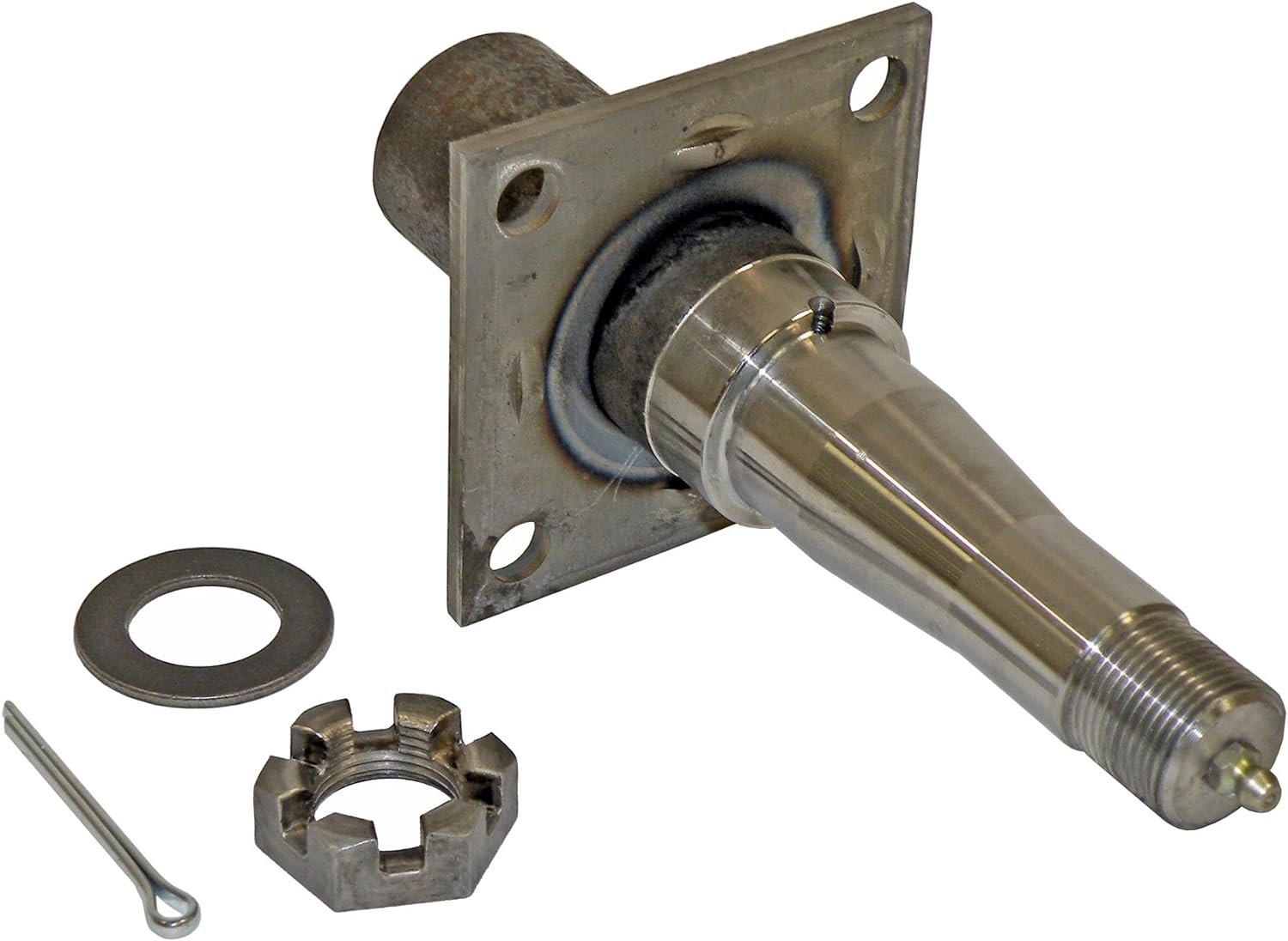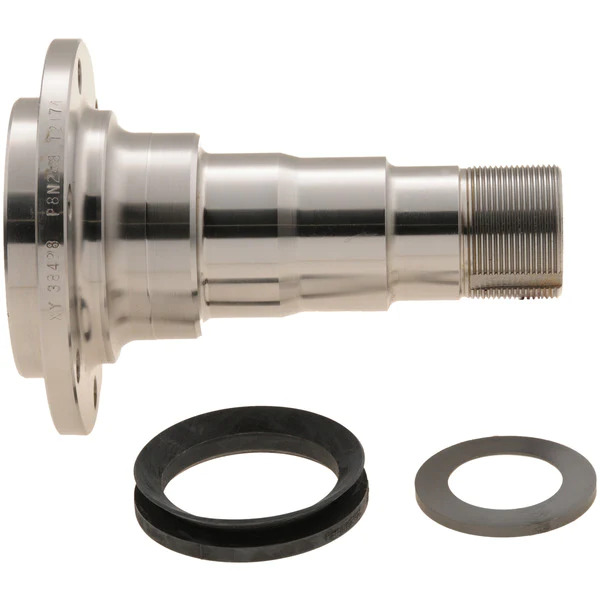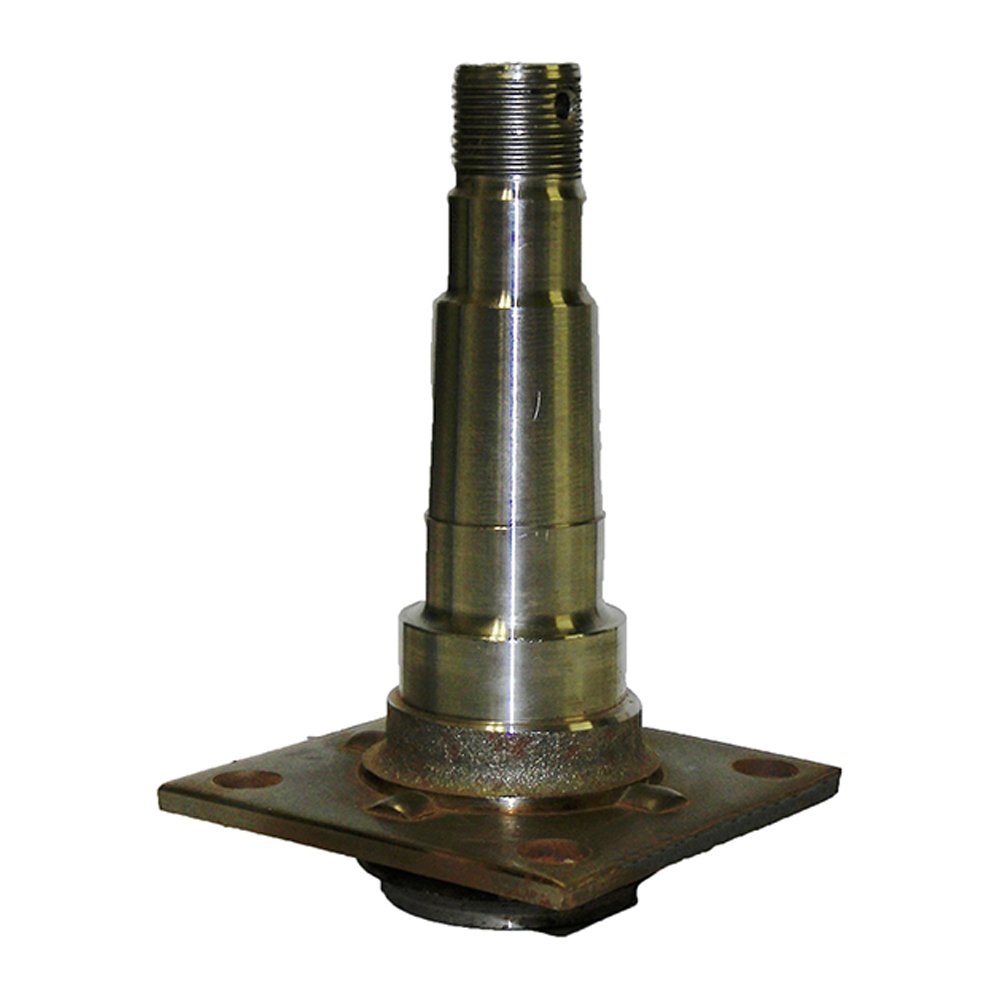Product Description
Products Details
| Product Name | Spare Part Spindle Cnc Forged Parts |
| Main Process | OEM Precision CNC Machined Brass Hot Forging Valve Fittings Custom Brass Forgings Machining Parts CNC Machining PartHot Forging, Cold Forging, CNC Machining |
| Material | Carbon Steel, Stainless Steel, Aluminum Alloy Or according to customer requirements |
| Forging Weight Range | 10gram – 200kgs |
| Surface Finish | Pickling, Passivation, Sand-blasting, Shot-blasting, Electro-polishing, Buffing, Mirror-polishing, Zinc/Chrome Plating, Anodizing,Powder Coating,Electrophoretic painting etc. |
| Machining Process | CNC Machining/ Lathing/ Milling/ Turning/ Boring/ Drilling/ Tapping/ Broaching/Reaming |
| Machining Tolerance | 0.01mm-0.05mm |
| Heat Treatment | Solution, Annealing, Quenching, Tempering, Aging, etc. |
| Special Treatment | Hardening, Vacuum Impregnation, etc. |
| Special Inspection | Leakage test, Shell Strength test, Radiographic test, Ultrasonic test, Magnetic test, Liquid penetration test, Salt spray test, etc. |
| Application | Petrochemical industry |
| Lead time | 35 days for mold and samples, after confirmation of samples, mass production time is 25 days |
| Small Quantity | Is acceptable |
| Quality Control | Full Inspection |
Specification
| item | value |
| Place of Origin | China |
| Brand Name | |
| Model Number | ANY TYPE |
| Model | Customizable |
| Name | Forged spare parts spindle |
| Material | Carbon steel |
| Color | According to customer requirements |
| Shape | According to the drawings |
| Characteristic | steel product |
| MOQ | 1000pcs |
| Keyword | Forging |
| Lead Time | 25~45 Days |
| Dimensions | Customers’ Requiry |
OUR BUSINESS SCOPE
Product application
Metal parts can be used for car, truck, elevator, refrigerator, furniture, medical instruments, other mechanical equipment, control cabinet, ventilation equipment, construction industry, wind power industry, solar industry and so on.
Product include
varieties of metal forging parts, metal press forging parts, metal welding parts, metal deep drawing parts, metal punch parts, laser cutting parts;
CNC parts, CNC machining parts, Metal chassis, metal cabinets, metal cases, metal enclosures, metal auto parts,
Metal sleeve, tube, pipe, spacer, metal bracket, bumper bracket, shackle, Radiator Block, door hanger, bar pin,
Material available
Carbon steel, Stainless steel, Spring steel, Aluminum, Aluminum alloy, Galvanized steel and so on.
Surface treatment available
polishing, grinding, brush, zinc plating, powder coating, blackening (black phosphate and light oil dip), E-coating (electrophoresis), anodizing, nickel plating, chrome plating, anti-rust oil, etc.
Metal processing available
Forging parts: tooling making, samples approval, forming, bending, tapping, welding, assembly & finishing.
CNC parts: CNC lathe milling, CNC lathe turning, drilling, tapping, finishing & assembly.
Specification
OEM, according to customer’s drawing or sample
Tolerance
Forging parts:0.01-0.1mm, CNC machining parts:0.1-0.002mm
Service available
Before mass production, we supply pre-production samples for customer final confirmation, tooling maintenance and tooling slight change free
Certificate
ISO9001:2009
ZheJiang Duanhuang industry Co., Ltd. is located in HangZhou, China. HangZhou, the ancient capital, is a world famous historical and cultural city. It is also an important industrial city in China. Many well-known national scientific research institutions are established here, providing key technical support and services for the development and improvement of the industrial chain. The main business of our company is industrial product design, auto parts design and production, other mechanical parts design and production, titanium alloy material and its products research and development production, CZPT products research and development production, the company has a complete mechanical parts design and production process supporting process, is a professional machinery parts supplier.
The company has complete hardware supporting facilities, and the hot-die forging press models are 300T, 400T, 630T, 1000T, 1600T, 2500T, 4000T, 8000T and other different tonnage forging presses, which are suitable for the production of products from 0.1 kg to 200 kg. The cold forging machine has 4 hydraulic presses, which can produce cold forging products from 0.01 kg to 20 kg. The products can be made of carbon steel, alloy steel, copper forgings, aluminum forgings, stainless steel, titanium alloy and so on. The company′s products are mainly used in automobile industry, construction machinery industry, railway locomotives, power fittings, mining machinery and other industries. The company′s main customers are China CZPT group, China ZheJiang automobile group, China locomotive group, China yituo,and so on.
The quality control equipment of the company includes flaw detector, hardness tester, spectrometer, metallographic analysis, tensile test, coordinate measuring instrument, etc. The company is engaged in the industrial product design and production for 20 years, has accumulated the rich industry experience. The company undertakes customized OEM services for processing of incoming drawings and samples, and can complete all processes including 3D modeling design, mold design and production, product forging and pressing, heat treatment of forgings, and machining. Our company has an independent industrial design service center and a professional industrial design service team, which provides strong technical support for technological innovation of enterprises. The company has special metal products design and development, manufacturing and production services. Titanium alloy products and industrial CZPT products developed and produced by the company are widely used in machinery manufacturing industry and other related fields.
/* January 22, 2571 19:08:37 */!function(){function s(e,r){var a,o={};try{e&&e.split(“,”).forEach(function(e,t){e&&(a=e.match(/(.*?):(.*)$/))&&1
| Material: | Carbon Steel |
|---|---|
| Load: | Central Spindle |
| Stiffness & Flexibility: | Stiffness / Rigid Axle |
| Journal Diameter Dimensional Accuracy: | IT6-IT9 |
| Axis Shape: | Straight Shaft |
| Shaft Shape: | Stepped Shaft |
| Samples: |
US$ 20/Piece
1 Piece(Min.Order) | |
|---|
| Customization: |
Available
| Customized Request |
|---|

What are the torque specifications for securing an axle spindle to the suspension components?
The torque specifications for securing an axle spindle to the suspension components can vary depending on the specific vehicle make, model, and year. It’s important to refer to the manufacturer’s documentation or service manual for the accurate torque specifications. Here is a detailed explanation:
When installing or reassembling an axle spindle, it’s crucial to tighten the fasteners to the recommended torque specifications. This ensures proper clamping force and prevents issues such as overtightening, undertightening, or uneven loading. The torque specifications typically include values for the spindle nut, caliper bolts, and other related fasteners.
Since torque specifications can differ among vehicle models and years, it’s best to consult the appropriate manufacturer’s documentation or service manual for the exact torque values. These resources provide detailed information specific to your vehicle, ensuring accurate and safe installation. The documentation may be available in print form from the vehicle manufacturer, or in digital form through online service portals or third-party publications.
When referring to torque specifications, it’s essential to consider the following factors:
- Torque Units: Torque specifications are typically provided in either foot-pounds (ft-lbs) or Newton-meters (Nm). Ensure that you are using the correct unit of measurement to avoid errors.
- Torque Sequence: In some cases, the manufacturer may specify a specific sequence for tightening the fasteners. This sequence ensures even distribution of clamping force and proper alignment of components. Refer to the manufacturer’s documentation for any specified torque sequences.
- Thread Lubrication: Depending on the specific application, the manufacturer may recommend the use of a specific lubricant or thread-locking compound on the fasteners. Follow the manufacturer’s recommendations regarding lubrication to achieve accurate torque values.
- Re-Torqueing: In certain cases, the manufacturer may recommend re-torquing the fasteners after a specific mileage or driving time. This is done to account for any settling or relaxation that may occur in the components. Check the manufacturer’s documentation for any re-torqueing instructions.
It’s worth emphasizing that using the correct torque specifications is crucial to ensure the integrity and safety of the axle spindle and related components. Incorrectly tightened fasteners can lead to issues such as wheel bearing damage, premature wear, or even component failure.
If you are unsure about the torque specifications or lack the necessary tools and expertise, it is recommended to have a qualified mechanic or technician perform the installation or reassembly. They have the knowledge and experience to ensure that the axle spindle is secured with the appropriate torque, following the manufacturer’s specifications.
In summary, the torque specifications for securing an axle spindle to the suspension components vary depending on the vehicle make, model, and year. It is essential to consult the manufacturer’s documentation or service manual for the accurate torque values, taking into account torque units, torque sequence, thread lubrication, and any re-torqueing instructions. When in doubt, seek professional assistance to ensure proper installation and safe operation of the axle spindle.

How often should axle spindles be inspected as part of routine vehicle maintenance?
Inspecting axle spindles as part of routine vehicle maintenance is crucial for ensuring their continued performance, safety, and longevity. The frequency of axle spindle inspections can vary depending on several factors, including the vehicle type, driving conditions, and manufacturer recommendations. Here are some general guidelines:
- Manufacturer Recommendations: Refer to the vehicle’s owner’s manual or the manufacturer’s maintenance schedule for specific guidelines on axle spindle inspections. Manufacturers often provide recommended inspection intervals based on mileage or time, such as every 30,000 miles or every 2 years. Following the manufacturer’s recommendations ensures that you adhere to their specified maintenance intervals.
- Driving Conditions: Consider the driving conditions in which your vehicle operates. If you frequently drive in severe conditions such as off-road, dusty, or high-temperature environments, the axle spindles may require more frequent inspections. These conditions can contribute to accelerated wear or potential damage to the spindles, making more frequent inspections necessary to detect any issues early on.
- Visual Inspections: Perform visual inspections of the axle spindles regularly, especially during routine tire maintenance or brake inspections. Look for signs of damage, such as cracks, corrosion, or bent spindles. Pay attention to any unusual noise, vibration, or steering irregularities, as they can indicate potential issues with the spindles. If any abnormalities are observed, a more thorough inspection or professional evaluation should be conducted.
- Service Intervals: Take advantage of regular service intervals, such as oil changes or tire rotations, to have a qualified mechanic inspect the axle spindles. They can assess the condition of the spindles, check for proper lubrication, and identify any signs of wear or damage. The mechanic can recommend specific inspection intervals based on their expertise and the vehicle’s condition.
- Preventive Maintenance: In addition to regular inspections, consider incorporating preventive maintenance practices for your vehicle. This can include proactive measures such as applying protective coatings to the spindles, ensuring proper wheel alignment, and maintaining appropriate tire pressures. These actions can contribute to the longevity and optimal performance of the axle spindles.
It is important to note that the guidelines provided are general recommendations, and specific vehicle models or manufacturers may have different requirements. Therefore, always consult the vehicle’s owner’s manual or seek advice from a qualified mechanic or authorized dealership to determine the appropriate inspection frequency for the axle spindles in your vehicle.
Regular inspections of the axle spindles as part of routine vehicle maintenance help identify potential issues early, prevent further damage, and maintain the overall safety and reliability of the vehicle.

Can a DIY enthusiast replace a damaged axle spindle, and what are the steps involved?
Replacing a damaged axle spindle is a complex mechanical task that requires advanced knowledge and specialized tools. It is generally recommended to seek the assistance of a professional mechanic or technician for such a repair. However, if you have the necessary expertise, experience, and access to the appropriate tools, it may be possible for a skilled DIY enthusiast to replace a damaged axle spindle. Here are the general steps involved in replacing an axle spindle:
Note: The following steps provide a general outline of the process, but it’s important to consult the specific repair manual for your vehicle and follow the manufacturer’s instructions.
- Preparation: Begin by ensuring that you have the correct replacement axle spindle that matches the specifications of your vehicle. Gather all the necessary tools and equipment required for the job, including a hydraulic jack, jack stands, socket set, wrenches, pry bar, torque wrench, and any specialized tools mentioned in the repair manual.
- Vehicle Preparation: Park the vehicle on a level surface and engage the parking brake. If the axle spindle to be replaced is on the front axle, turn the steering wheel to the straight-ahead position. If it’s on the rear axle, chock the front wheels to prevent the vehicle from rolling.
- Suspension Disassembly: Depending on the vehicle’s design, you may need to remove certain components to access the axle spindle. This can include removing the wheel, brake caliper, brake rotor or drum, tie rod ends, ball joints, axle shafts, and any other components obstructing the spindle’s removal. Follow the repair manual instructions for proper disassembly.
- Axle Spindle Removal: Once the suspension components are removed, you can proceed with removing the damaged axle spindle. This typically involves disconnecting any remaining attachments, such as mounting bolts or fasteners, and carefully maneuvering the spindle out of its housing. Take care not to damage surrounding components or disturb other parts of the suspension system.
- Axle Spindle Installation: Install the replacement axle spindle by following the reverse order of the removal steps. Carefully position the spindle back into its housing, ensuring proper alignment. Reattach any fasteners or mounting bolts according to the specified torque values. Take care to follow the manufacturer’s instructions for any specific procedures or considerations during installation.
- Suspension Reassembly: Reinstall all the components that were removed during the disassembly process, including brake calipers, rotors or drums, tie rod ends, ball joints, axle shafts, and any other relevant parts. Ensure that all connections are secure and torqued to the specified values.
- Final Checks: Double-check all the connections, fasteners, and components to ensure everything is properly reassembled. Confirm that the axle spindle is securely in place and aligned correctly. Before lowering the vehicle, perform a thorough inspection of the suspension system to ensure there are no loose or forgotten components.
- Testing and Alignment: Once the replacement axle spindle is installed, it’s important to have the vehicle’s alignment checked and adjusted by a professional. Improper alignment can lead to uneven tire wear, handling issues, and compromised safety. Schedule a visit to an alignment specialist to ensure the vehicle’s alignment is within the recommended specifications.
It’s crucial to note that replacing an axle spindle involves working with critical components of the vehicle’s suspension and steering systems. Misinstallation or improper assembly can lead to severe safety risks and further damage to the vehicle. If you are unsure or lack the experience and expertise, it is strongly recommended to entrust the task to a qualified professional mechanic or technician.
In summary, while a skilled DIY enthusiast may be able to replace a damaged axle spindle, it is a complex task that requires advanced knowledge, experience, and specialized tools. It’s important to follow the manufacturer’s instructions, consult the repair manual for your specific vehicle, and exercise caution throughout the process. If in doubt, it’s best to seek professional assistance to ensure the job is done safely and correctly.


editor by CX 2024-04-30